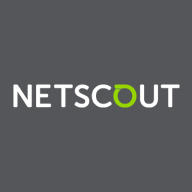

NETSCOUT nGeniusONE and Splunk Observability Cloud are leading contenders in network performance and observability solutions. While NETSCOUT is renowned for its detailed packet inspection and network performance analysis, Splunk is noted for its superior log analysis and customizable dashboards, benefiting from greater integration across cloud environments.
Features:NETSCOUT nGeniusONE leverages deep packet inspection, NetFlow traffic analysis, and voice traffic monitoring to offer comprehensive insights into network performance, allowing for detail-oriented troubleshooting and capacity planning. Splunk Observability Cloud excels in log analysis, supports a wide variety of applications, and offers robust customizable dashboards that facilitate real-time error detection across multiple platforms.
Room for Improvement:NETSCOUT nGeniusONE needs enhanced user-friendliness, a modular licensing approach, and better integration with virtual environments to reduce dependence on physical appliances. Splunk Observability Cloud requires a more intuitive interface, reduced costs, and streamlined system integration, along with more user-friendly alert systems to improve user experience.
Ease of Deployment and Customer Service:NETSCOUT nGeniusONE primarily utilizes on-premises deployment, with hybrid cloud options, supported by dedicated engineers and personalized support, making direct resolution of issues effective. Splunk Observability Cloud is flexible across on-premises and cloud setups, but although benefiting from robust technical support, could enhance their self-service options to match deployment versatility.
Pricing and ROI:NETSCOUT nGeniusONE is seen as costly, with some users paying for unnecessary features, yet its functionalities offer significant ROI by enhancing network performance. Splunk Observability Cloud, similarly expensive, ties costs to data volume, posing challenges for budget-conscious users. However, its immediate data insights provide prompt productivity benefits, making it appealing for those needing rapid responses.
Using Splunk has saved my organization about 30% of our budget compared to using multiple different monitoring products.
Anyone working in front-end management should recognize the market price to see the true value of end-user monitoring.
I have definitely seen a return on investment with Splunk Observability Cloud, particularly through how fast it has grown and how comfortable other teams are in relying on its outputs for monitoring and observability.
They need to work on their response time and overall competence.
The distributor's support is rated an eight out of ten, indicating room for improvement in SLA handling.
I am actually happy with technical support from NETSCOUT.
On a scale of 1 to 10, the customer service and technical support deserve a 10.
They have consistently helped us resolve any issues we've encountered.
They often require multiple questions, with five or six emails to get a response.
The solution is highly scalable and accommodates the growth needs effectively.
It is not similar to software solutions Datadog or Dynatrace where they can easily add agents without problems.
We've used the solution across more than 250 people, including engineers.
As we are a growing company transitioning all our applications to the cloud, and with the increasing number of cloud-native applications, Splunk Observability Cloud will help us achieve digital resiliency and reduce our mean time to resolution.
I would rate its scalability a nine out of ten.
Datadog is more stable than NETSCOUT nGeniusONE, being a SaaS-based solution compared to on-prem solutions like NETSCOUT.
I rate the stability of NETSCOUT nGeniusONE as ten out of ten since we have not experienced any escalations or downtime issues from the end user's side.
Customers are more sensitive about NETSCOUT nGeniusONE's upgrades because it has hardware.
I would rate its stability a nine out of ten.
We rarely have problems accessing the dashboard or the page.
Unlike NetScout or regular agents for APM, RUM has many problems during the POC phase because customer environments vary widely.
Customers want to have service assurance, including NPM and APM, from one vendor.
It would be beneficial to see more AI capabilities included in nGeniusONE to further streamline processes.
Many big companies Samsung and Hyundai try to build their own monitoring solutions using open-source tools and their own engineers, though it has not been successful.
The out-of-the-box customizable dashboards in Splunk Observability Cloud are very effective in showcasing IT performance to business leaders.
The next release of Splunk Observability Cloud should include a feature that makes it so that when looking at charts and dashboards, and also looking at one environment regardless of the product feature that you're in, APM, infrastructure, RUM, the environment that is chosen in the first location when you sign into Splunk Observability Cloud needs to stay persistent all the way through.
There is room for improvement in the alerting system, which is complicated and has less documentation available.
The cost depends on the size of the customer, as sizing controls the pricing.
Splunk is a bit expensive since it charges based on the indexing rate of data.
It is expensive, especially when there are other vendors that offer something similar for much cheaper.
It appears to be expensive compared to competitors.
The capability of real-time traffic intelligence is also very useful because it allows for the comparison between real-time and historical packet levels.
Their analysis capability actually surpasses other APM solutions, which is why customers love it.
Splunk provides advanced notifications of roadblocks in the application, which helps us to improve and avoid impacts during high-volume days.
For troubleshooting, we can detect problems in seconds, which is particularly helpful for digital teams.
It offers unified visibility for logs, metrics, and traces.
| Product | Market Share (%) |
|---|---|
| Splunk Observability Cloud | 1.2% |
| NETSCOUT nGeniusONE | 1.5% |
| Other | 97.3% |


| Company Size | Count |
|---|---|
| Small Business | 14 |
| Midsize Enterprise | 3 |
| Large Enterprise | 37 |
| Company Size | Count |
|---|---|
| Small Business | 20 |
| Midsize Enterprise | 10 |
| Large Enterprise | 43 |
Splunk Observability Cloud offers sophisticated log searching, data integration, and customizable dashboards. With rapid deployment and ease of use, this cloud service enhances monitoring capabilities across IT infrastructures for comprehensive end-to-end visibility.
Focused on enhancing performance management and security, Splunk Observability Cloud supports environments through its data visualization and analysis tools. Users appreciate its robust application performance monitoring and troubleshooting insights. However, improvements in integrations, interface customization, scalability, and automation are needed. Users find value in its capabilities for infrastructure and network monitoring, as well as log analytics, albeit cost considerations and better documentation are desired. Enhancements in real-time monitoring and network protection are also noted as areas for development.
What are the key features?In industries, Splunk Observability Cloud is implemented for security management by analyzing logs from detection systems, offering real-time alerts and troubleshooting for cloud-native applications. It is leveraged for machine data analysis, improving infrastructure visibility and supporting network and application performance management efforts.
We monitor all Network Monitoring Software reviews to prevent fraudulent reviews and keep review quality high. We do not post reviews by company employees or direct competitors. We validate each review for authenticity via cross-reference with LinkedIn, and personal follow-up with the reviewer when necessary.